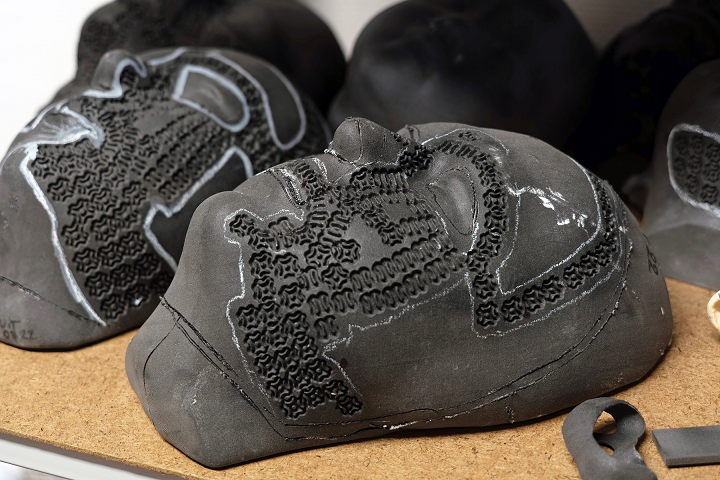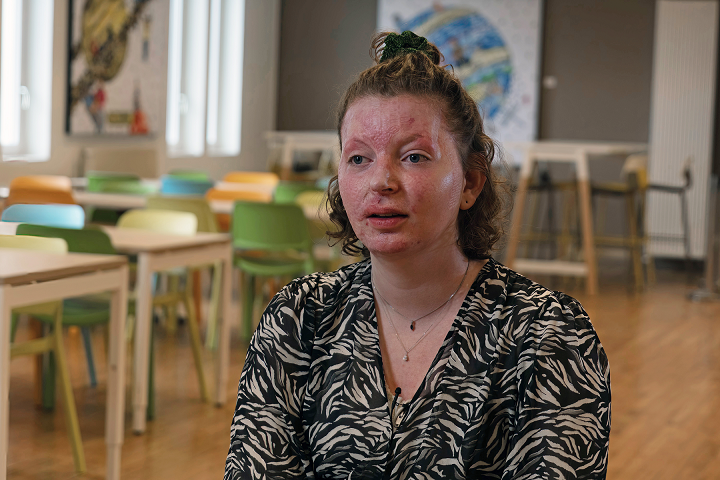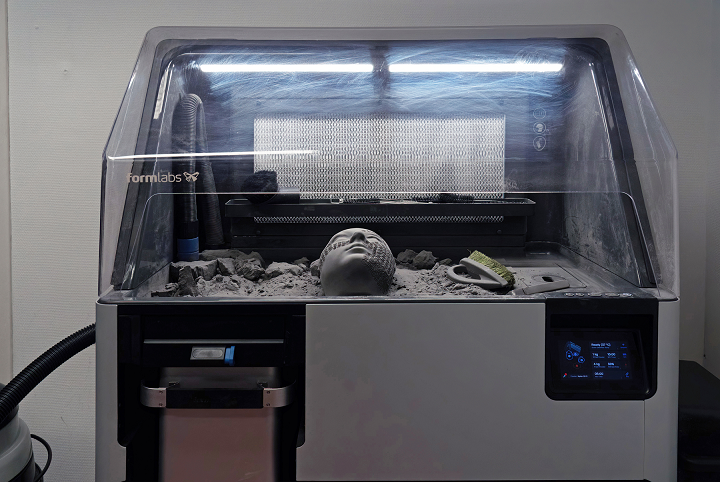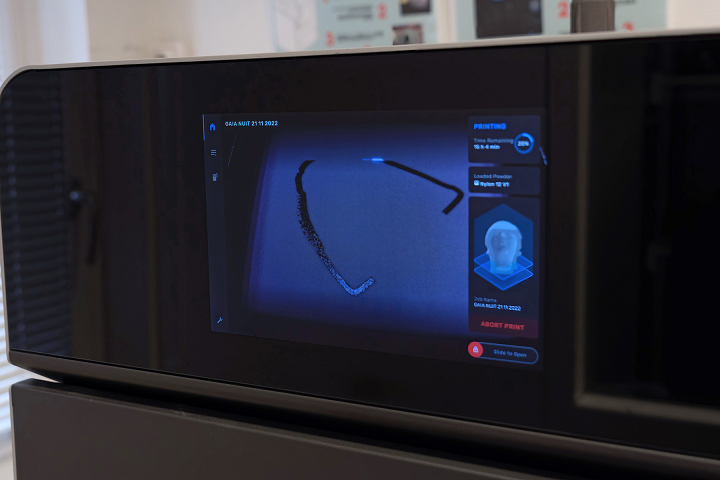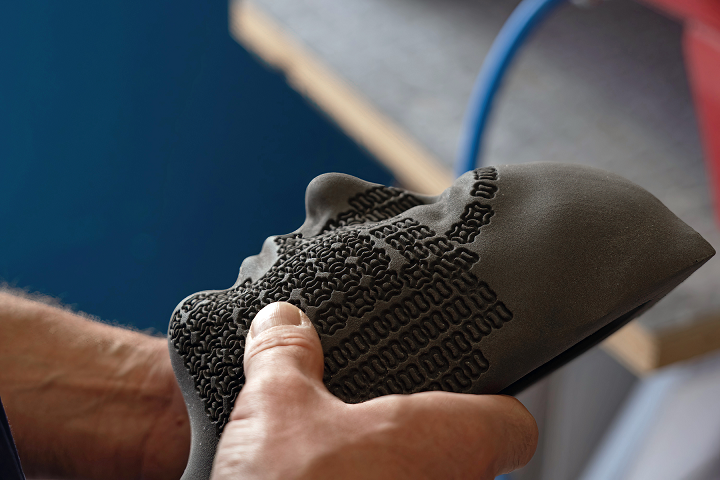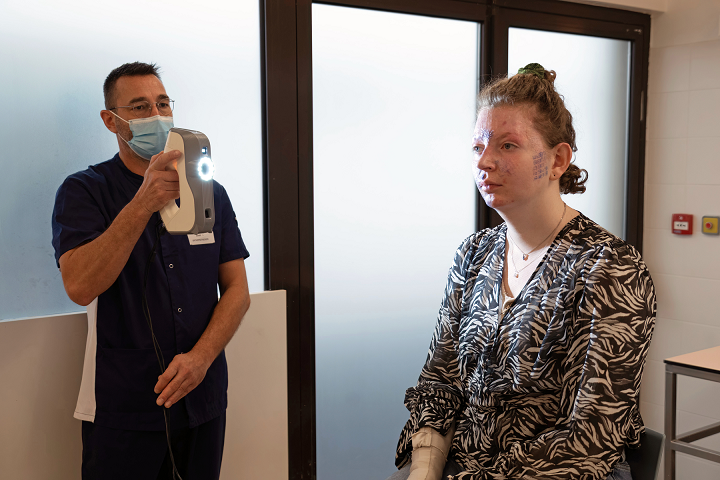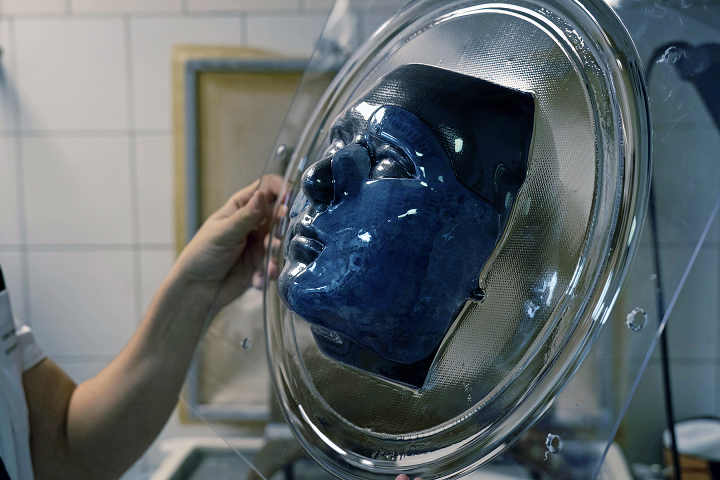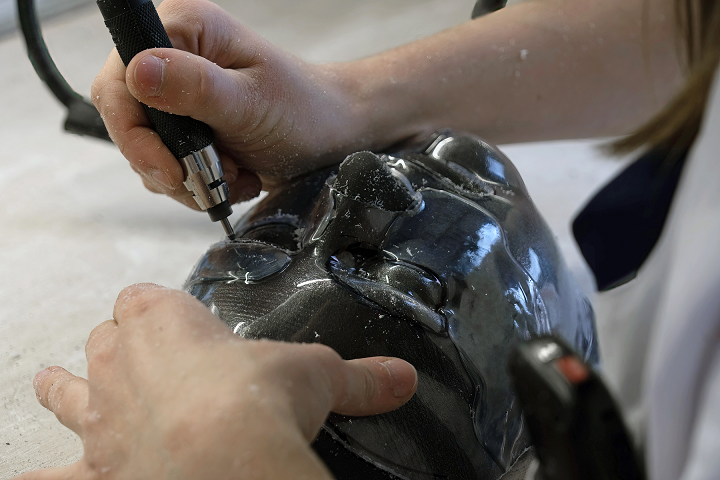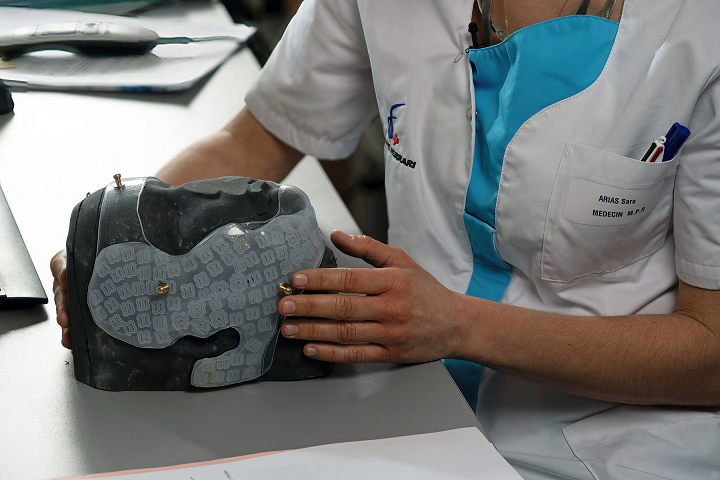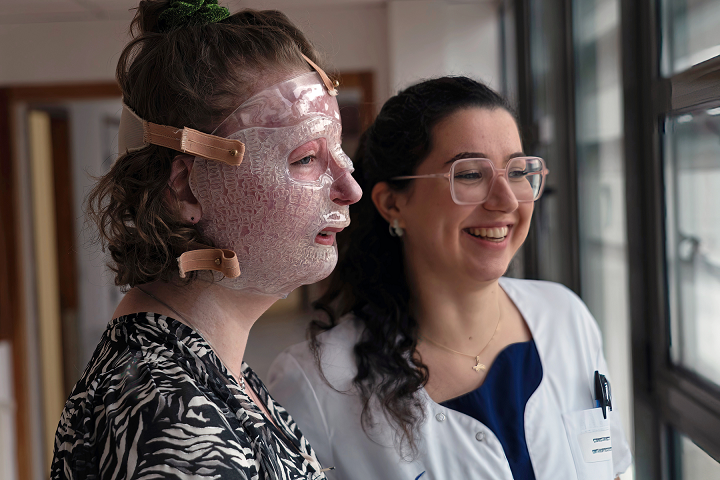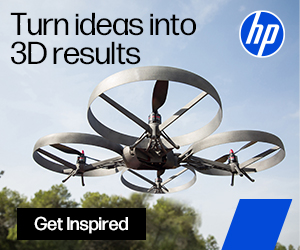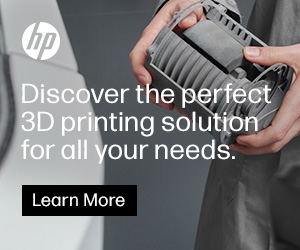Masks for Pediatric Burn Patients Made Possible with Formlabs SLS 3D Printers
Pediatric rehabilitation center Romans Ferrari is said to be one of the best places for children to recover from severe trauma, including burns. The center, which is near Lyon in France, is very experienced in treating severe facial burns, using special compressive masks that make the skin more flexible and reduce the risk of scarring and complications. But the traditional production method for these masks used a workflow that could induce post-traumatic stress disorder (PTSD) in young patients, so Romans Ferrari set out to find a better restorative burns treatment approach, turning to Formlabs and its Fuse 1 SLS 3D printers.
Pediatric patients are referred to Romans Ferrari after they receive their first, possibly life-saving treatment, and things get moving quickly to avoid different kinds of scarring complications. The medical team epidermizes the wounds fast so there’s less risk of infection and fluid disbalance, and then rehabilitation begins in earnest, dressing the burned skin with compressions and going through rehab sessions that combine methods like filiform showers and physiotherapy. Compression devices are very important at this stage, as they improve scar texture, help the scars mature and heal, and prevent complications.
Compressive masks for facial burns are traditionally made from plaster casts—using plaster strips, an orthoprosthetist creates a negative, which is then used to create a positive for thermoforming the final mask. But the process can be exceedingly uncomfortable for the already traumatized young patients.
As Sara Arias, Doctor for Physical and Medical Rehabilitation, Centre Romans Ferrari, explained, “It required the patients to be motionless for the duration of the plaster cast that lasts about half an hour, which can be difficult, especially for children, and could reactivate symptoms of post-traumatic stress disorder because the bandages are a little warm, and it is sometimes unpleasant for the patients to have the heat on their face.”
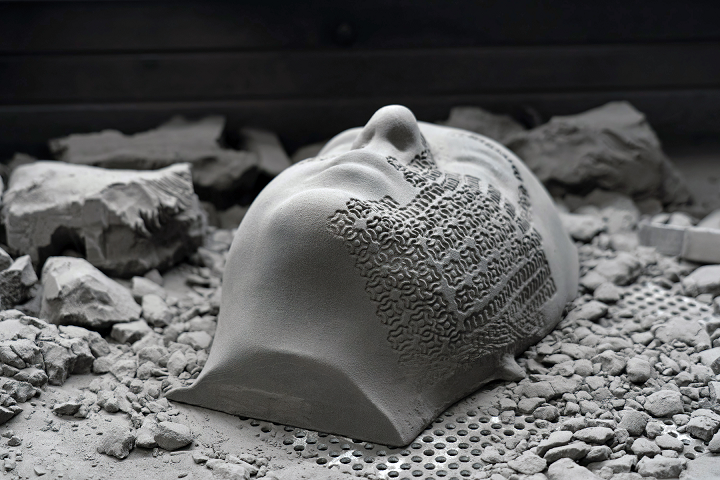 The masks are 3D printed on a Fuse Series SLS 3D printer.
The masks are 3D printed on a Fuse Series SLS 3D printer.Romans Ferrari doctors and engineers thought there had to be a better way. Board member Jean-François Veauville, formerly an aeronautical construction engineer focused on composite materials, looked at the issue from his point of view, and helped usher in the technology that would ultimately change how the team made its compressive masks.
“3D printing is something we’ve dreamed of for quite a long time. We had imagined that a 3D printer would allow us to produce a mask based on the scanned file without ever having to touch the patient,” said Christophe Debat, General Manager, Centre Romans Ferrari. “It was when Mr. Veauville arrived and had an engineering perspective that he said, ‘We have to put that in the hands of engineers.'”
Veauville worked with a team of engineering students from École Centrale de Lyon to evaluate whether 3D printing was a viable option for direct mask production. After researching multiple technologies and evaluating test prints over six months, they determined that 3D printing could be used to fabricate the positives, or molds, for the masks.
According to the World Health Organization, burns are the fifth most common cause of non-fatal childhood injuries. A paper written by University of Washington researchers explains that treatment of pediatric burns “deserve special focus,” because of the “high risk of mortality for burn-injured patients, the physical and psychosocial impacts on people living with burn injury, and the critical lack of both burn and pediatric care capacity globally.” 3D printing has previously been used for burn recovery and treatment, though not in this specific way. But it’s a great application, especially if it means less trauma for young patients who have already been through enough.
Reseller 3DZ France worked with the center to figure out the best way to digitize their workflow, from finding the right 3D printer and digitally replicating the manual process to validating the workflow. Additionally, it is a costly, lengthy process to subcontract the masks, so Romans Ferrari needed a solution that it could implement onsite.
“This type of development is not compensated by the health agency for our facility,” Veauville explained. “We were able to work on this because of donations, and because the Formlabs machine which was recommended to us was affordable enough that it fit within our means.”
The first step in the digital workflow is 3D scanning the patient’s face, then using CAD software to design mask. Before scanning, the doctor gently marks the eventual locations of customized growth and maturation devices (DMDGs) on the patient. These devices offer more targeted support for burn treatment and scar progression.
A technician uses a digital pen to add the engraved DMDG relief details to the design in CAD software. Finally, the mask mold is printed on a Fuse 1 SLS 3D printer, which is intuitive enough that new users can quickly and easily fabricate the high-precision masks. The mold is then used as the positive for thermoforming the custom mask out of plastic.
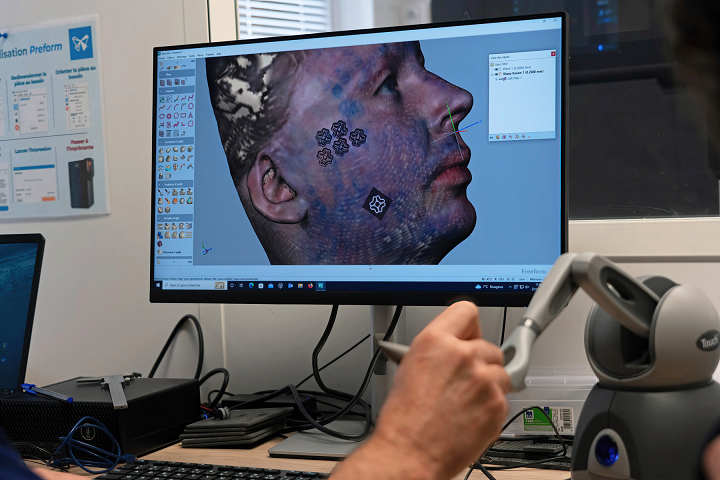 An orthoprosthetist uses a digital pen to precisely add the targeted reliefs to the design before creating a 3D printable model.
An orthoprosthetist uses a digital pen to precisely add the targeted reliefs to the design before creating a 3D printable model.“[The new workflow] is faster and also more comfortable for the patient because they don’t feel the plaster strips on their face,” explained Dr. Arias. “The results of 3D printing have always been satisfactory. Where we needed to think as a team, and especially to provide training to the orthoprosthetists, was how to place the DMDG devices with sufficient precision. It is necessary to place these reliefs of different shapes in a very precise way on the scar according to the zones which need it.”
The masks are fitted to the patients, who say that the whole process is much more comfortable because they don’t have to feel the plaster strips on their face.
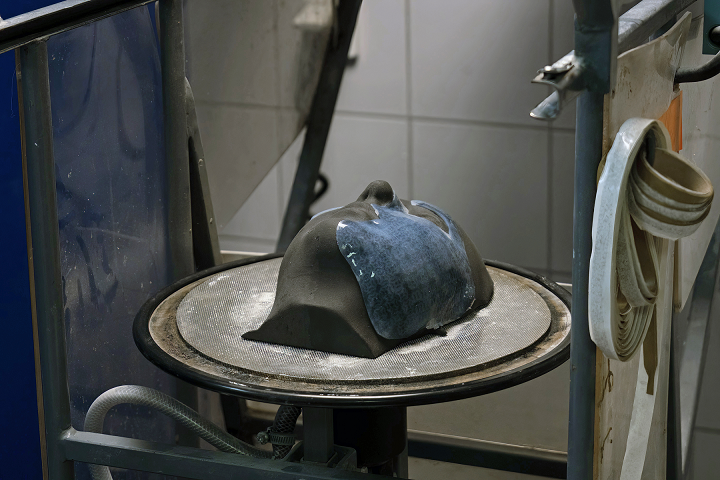 The reliefs are handcrafted on 3D printed molds out of silicone, which then serves as the positive for thermoforming the final mask out of a transparent plastic sheet.
The reliefs are handcrafted on 3D printed molds out of silicone, which then serves as the positive for thermoforming the final mask out of a transparent plastic sheet.Debat said that the team has already created over 100 masks in a year with the new workflow, and not just in France. Thanks to the use of digital technologies like 3D printing, Romans Ferrari has also worked with clinics in Italy, and collaborated with Doctors Without Borders. In Jordan, patients’ faces were scanned, and the files sent to the center in France, which manufactured the compressive masks and shipped them back to Jordan.
“Due to our extensive experience, we aim to provide this technique to all patients, as the methods and tools we produce are unique and far more efficient than those available elsewhere,” Debat said. “The idea is to be able to find partners with whom we will have the scanner, the doctor who will design the medical devices, and we manufacture them at cost, so others can also benefit from this innovation.”
Patients will often stay at Romans Ferrari for over a year, depending on how much rehab they need, and during their time living at the center, they’ll continue their education, go on group outings, and get ready for life back on the outside. It’s hard to deal with the stares, but thanks to 3D printing, these compressive masks can promote better healing.
“I’ve been wearing it every day for over a year now. At first, it’s a bit weird, it’s not very pleasant, you want to take it off, and it feels a bit itchy,” said Laura Weibel, a patient at Romans Ferrari. “But after that, you get used to it and I can say that when I don’t have it on, it almost pulls me, so I almost prefer to have the mask on. I feel that it has an effect on my skin, I really see the difference because a year ago my skin was not like this at all, I was redder, puffier, and much more rigid, so I feel that the mask really has positive effects.”
(Source/Images: Formlabs)
Subscribe to Our Email Newsletter
Stay up-to-date on all the latest news from the 3D printing industry and receive information and offers from third party vendors.
Print Services
You May Also Like
3D Printing News Briefs, April 12, 2025: RAPID Roundup
The news from last week’s RAPID+TCT in Detroit just keeps on coming! That’s why today’s 3D Printing News Briefs is another RAPID Roundup of more exciting announcements from the trade...
What I Would Do If I Were Josef Průša, Part 2: Right on the Nose
How can you beat Garry Kasparov? With a baseball bat. If you ask yourself the question, “How can I beat Garry Kasparov,” and silently add the fragment “at chess” in...
What I Would Do If I Were Josef Průša, Part 1: Shark Cosplay
If I were Josef Průša, I’d probably gloat and be insufferable. Honestly, though, it’s a question that has vexed me. Josef asked on LinkedIn whether people would like to see...
Flashforge AD5X Review: Multicolor TPU 3D Printing Made Simple
Disclosure:The AD5X was provided to me by Flashforge free of charge for the purpose of this review. I have not received any additional compensation. All opinions expressed are my own,...


